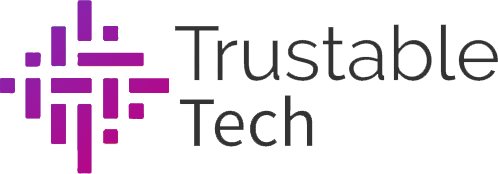Talent acquisition software plays a crucial role in the recruitment process by assisting organizations in identifying and selecting suitable candidates.
This article aims to explore the significance of talent acquisition software, analyze key features to consider when choosing such software, evaluate top providers in this field, discuss best practices for implementation, and offer strategies to maximize its value.
By adopting an academic style characterized by objectivity and impersonality, this article provides professionals with comprehensive insights into finding the most appropriate talent acquisition software for their organizational needs.
Understanding the Importance of Talent Acquisition Software
The importance of talent acquisition software lies in its ability to efficiently and effectively identify and attract qualified candidates for job positions. Talent acquisition software offers numerous benefits that improve recruitment processes.
Firstly, it streamlines the entire hiring process by automating repetitive tasks such as resume screening and interview scheduling, saving recruiters valuable time and effort.
Additionally, talent acquisition software improves the accuracy of candidate evaluations through standardized assessments and data-driven decision-making tools. This ensures that only the most suitable candidates are considered for further stages of the recruitment process.
Moreover, talent acquisition software enhances collaboration among recruiters by providing a centralized platform for candidate management, facilitating easy communication and information sharing.
Key Features to Look for in Talent Acquisition Software
One important aspect to consider when evaluating talent acquisition software is the presence of robust analytics capabilities.
Customization options are another key feature to look for in talent acquisition software. These options allow organizations to tailor the software to their specific needs and requirements, ensuring a more efficient and effective recruitment process. By customizing the software, companies can align it with their unique workflows, job requirements, and hiring processes.
Integration capabilities are also crucial in talent acquisition software as they enable seamless integration with existing HR systems. This ensures a smooth flow of data between different platforms and eliminates the need for manual data entry or duplication of efforts. Efficient integration leads to improved workflow, reduces administrative burdens, and enhances overall productivity in the recruitment process.
Evaluating the Best Talent Acquisition Software Providers
When evaluating talent acquisition software providers, it is essential to consider their track record in delivering effective recruitment solutions. A vendor comparison can help organizations identify the best software provider that aligns with their specific needs and goals.
One important aspect to consider is the cost analysis of different vendors. This involves assessing not only the initial purchase cost but also ongoing maintenance fees, implementation costs, and any additional charges for upgrades or customization. It is crucial to evaluate the return on investment (ROI) that each vendor offers in terms of improved efficiency, reduced time-to-hire, and increased quality of hires.
Additionally, organizations should assess the scalability and flexibility of the software to accommodate future growth and changing business requirements.
Through a comprehensive evaluation process, organizations can select a talent acquisition software provider that meets their unique needs while maximizing value for money spent.
Implementing Talent Acquisition Software: Best Practices and Considerations
To successfully implement talent acquisition software, organizations should prioritize comprehensive training and support programs that ensure effective user adoption and minimize system downtime.
One of the main challenges in implementing such software is resistance to change from employees who are accustomed to traditional recruitment methods. Organizations can address this challenge by providing thorough training sessions that highlight the benefits of the new system and its ease of use. Additionally, ongoing support should be offered to address any concerns or issues that arise during the implementation process.
Another challenge is measuring the return on investment (ROI) of talent acquisition software. To overcome this, organizations can establish key performance indicators (KPIs) such as time-to-hire, cost per hire, and quality of hires. These metrics can help quantify the impact of the software on recruitment outcomes and justify its value to stakeholders.
Maximizing the Value of Talent Acquisition Software: Tips and Strategies
Maximizing the value of talent acquisition software can be achieved through the implementation of strategies that focus on optimizing recruitment processes and enhancing candidate engagement.
By leveraging the capabilities of this software, organizations can effectively streamline their hiring procedures, resulting in improved efficiency and cost savings.
To maximize return on investment (ROI), it is crucial to optimize the recruitment process by automating repetitive tasks, such as resume screening and interview scheduling. This allows recruiters to allocate more time to strategic activities like candidate relationship management and talent pipeline development.
Furthermore, integrating advanced analytics into the software enables data-driven decision-making, allowing organizations to identify patterns and trends in recruitment metrics.
By continuously evaluating and refining these strategies, organizations can enhance their talent acquisition efforts while simultaneously improving ROI.
Keywords: maximizing ROI, optimizing recruitment process

